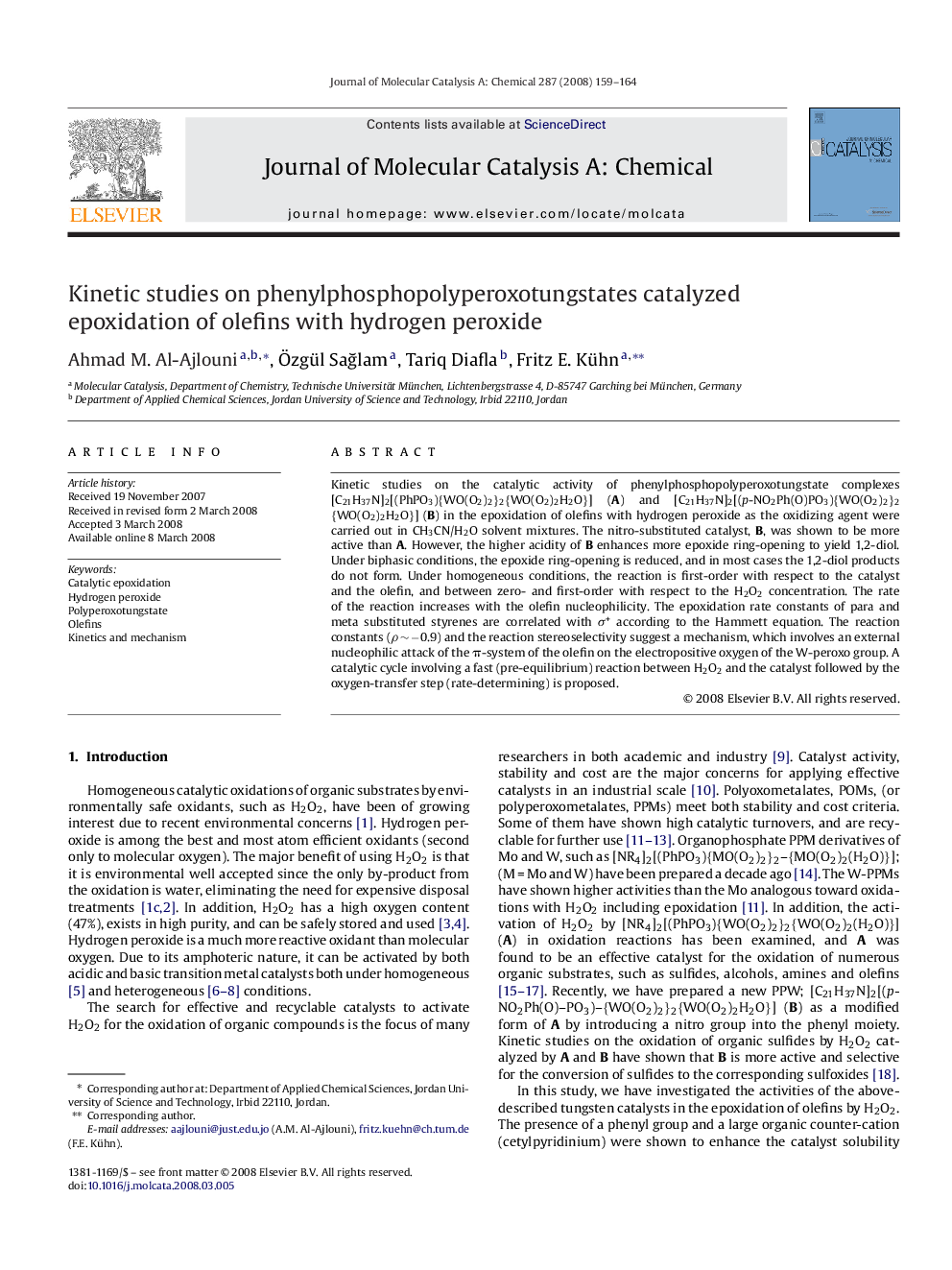| Article ID | Journal | Published Year | Pages | File Type |
|---|---|---|---|---|
| 67358 | Journal of Molecular Catalysis A: Chemical | 2008 | 6 Pages |
Kinetic studies on the catalytic activity of phenylphosphopolyperoxotungstate complexes [C21H37N]2[(PhPO3){WO(O2)2}2{WO(O2)2H2O}] (A) and [C21H37N]2[(p-NO2Ph(O)PO3){WO(O2)2}2{WO(O2)2H2O}] (B) in the epoxidation of olefins with hydrogen peroxide as the oxidizing agent were carried out in CH3CN/H2O solvent mixtures. The nitro-substituted catalyst, B, was shown to be more active than A. However, the higher acidity of B enhances more epoxide ring-opening to yield 1,2-diol. Under biphasic conditions, the epoxide ring-opening is reduced, and in most cases the 1,2-diol products do not form. Under homogeneous conditions, the reaction is first-order with respect to the catalyst and the olefin, and between zero- and first-order with respect to the H2O2 concentration. The rate of the reaction increases with the olefin nucleophilicity. The epoxidation rate constants of para and meta substituted styrenes are correlated with σ+ according to the Hammett equation. The reaction constants (ρ ∼ −0.9) and the reaction stereoselectivity suggest a mechanism, which involves an external nucleophilic attack of the π-system of the olefin on the electropositive oxygen of the W-peroxo group. A catalytic cycle involving a fast (pre-equilibrium) reaction between H2O2 and the catalyst followed by the oxygen-transfer step (rate-determining) is proposed.
Graphical abstractThe catalytic activities of phenylphosphopolyperoxotungstates for the epoxidation of alkenes and styrenes by H2O2 have been investigated under homogeneous and biphasic conditions. The presence of an electron-withdrawing group, such as nitro, increases the epoxidation rate as well as the epoxide ring-opening.Figure optionsDownload full-size imageDownload as PowerPoint slide
